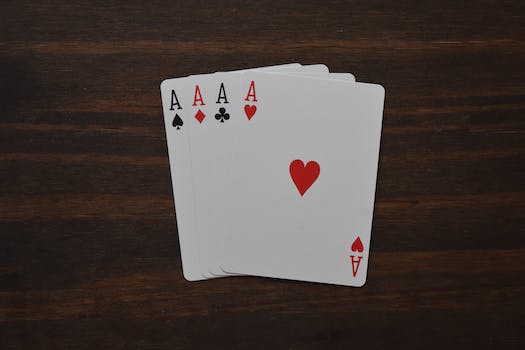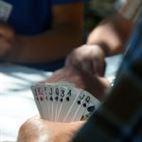Mind games at the poker table involve the strategic use of psychology to gain an advantage over opponents. Understanding and harnessing psychological tactics can significantly enhance a player’s chances of victory. By manipulating opponents’ emotions, perceptions, and decision-making processes, skilled poker players can tilt the odds in their favor. This article explores the art of mind games in poker, delving into various psychological techniques that can be employed to outwit opponents and secure success at the poker table.
The Power of Psychological Tactics in Poker: Understanding the Mind Games at the Table
One of the most important psychological tactics in poker is the ability to read your opponents. By observing their body language, facial expressions, and betting patterns, skilled players can gain valuable insights into the strength of their opponents’ hands. For example, a player who suddenly becomes tense and starts fidgeting may be bluffing, while a player who confidently places large bets may have a strong hand. By paying attention to these cues, players can make more informed decisions and adjust their own strategies accordingly.
Another powerful psychological tactic in poker is the art of bluffing. Bluffing involves making your opponents believe that you have a stronger hand than you actually do. This can be achieved through a variety of techniques, such as betting aggressively, maintaining a calm demeanor, or even using reverse psychology. By successfully bluffing, players can force their opponents to fold, even if they have better hands. However, bluffing requires careful timing and a deep understanding of your opponents’ playing styles. It is a high-risk, high-reward strategy that can either lead to a big win or a devastating loss.
In addition to reading opponents and bluffing, understanding the concept of tilt is crucial for success in poker. Tilt refers to a state of emotional frustration or anger that can cloud a player’s judgment and lead to poor decision-making. It often occurs after a series of bad beats or losses, causing players to play more aggressively or recklessly in an attempt to recoup their losses. Skilled players are able to recognize when they are on tilt and take steps to regain control of their emotions. This may involve taking a break from the game, practicing relaxation techniques, or seeking support from fellow players. By maintaining a calm and focused mindset, players can avoid falling into the trap of tilt and make rational decisions based on the cards and the situation at hand.
Furthermore, understanding the concept of table image is essential for successful poker play. Table image refers to the perception that other players have of you based on your previous actions and behavior at the table. For example, if you have been consistently aggressive and have won several big pots, other players may perceive you as a strong and unpredictable player. This can be advantageous as it may cause opponents to hesitate or fold when faced with your bets. On the other hand, if you have been playing conservatively and folding frequently, other players may perceive you as weak and may be more likely to bluff or call your bets. By carefully managing your table image, you can manipulate your opponents’ perceptions and gain an advantage in the game.
Mastering Poker Psychology: How to Use Mind Games to Your Advantage
One of the most important aspects of poker psychology is understanding the concept of “tells.” A tell is a subtle clue that reveals information about an opponent’s hand. It could be a twitch, a change in breathing pattern, or even a slight hesitation before making a bet. By observing and interpreting these tells, you can gain valuable insights into your opponents’ strategies and adjust your own accordingly.
However, it is important to remember that tells are not foolproof. Skilled players can intentionally give false tells to deceive their opponents. This is where the art of bluffing comes into play. Bluffing is a psychological tactic used to make your opponents believe that you have a stronger hand than you actually do. By carefully controlling your body language, facial expressions, and betting patterns, you can convince your opponents to fold, even when you have a weak hand.
Another psychological aspect of poker is the concept of tilt. Tilt refers to a state of emotional frustration or anger that can cloud a player’s judgment and lead to poor decision-making. Tilt can be triggered by a bad beat, a series of losses, or even a personal issue outside of the game. Recognizing when you or your opponents are on tilt is crucial. When you are on tilt, it is best to take a break and regain your composure before continuing to play. When your opponents are on tilt, you can exploit their emotional vulnerability by playing more aggressively and capitalizing on their mistakes.
In addition to understanding your opponents’ psychology, it is important to manage your own mindset at the poker table. Confidence is key in poker, as it allows you to make bold moves and take calculated risks. However, overconfidence can be your downfall. It is important to strike a balance between confidence and humility, always staying aware of the possibility of being outplayed.
Furthermore, patience is a virtue in poker. It is easy to get caught up in the excitement of the game and make impulsive decisions. However, successful players know that waiting for the right moment to strike is often more profitable than playing every hand. By exercising patience and discipline, you can avoid unnecessary losses and maximize your winnings.
Lastly, adaptability is crucial in poker psychology. The game is constantly evolving, and what works in one situation may not work in another. Being able to adjust your strategy based on the changing dynamics of the table is a skill that separates the best players from the rest. Pay attention to the playing styles of your opponents, the size of the pot, and the overall flow of the game. By staying flexible and adapting your approach, you can stay one step ahead of your opponents and increase your chances of success.
The Art of Bluffing: Psychological Strategies for Success in Poker
To successfully bluff in poker, you need to understand the psychology behind it. The first step is to create a strong table image. This means that you need to establish yourself as a player who is not afraid to take risks and make big bets. By doing this, you can intimidate your opponents and make them think twice before challenging you.
Another important aspect of bluffing is timing. You need to choose the right moment to make your move. Bluffing too often can make you predictable and easy to read. On the other hand, bluffing too rarely can make your opponents suspicious when you do decide to make a big bet. It is all about finding the right balance and keeping your opponents guessing.
One effective psychological strategy in bluffing is called the “reverse tell.” This is when you intentionally display a tell that suggests you have a weak hand, but in reality, you have a strong one. For example, you might act nervous or fidgety when you have a strong hand, making your opponents believe that you are bluffing. This can lead them to make a wrong decision and fold their hands, giving you the pot.
Another psychological strategy in bluffing is called the “semi-bluff.” This is when you have a hand that is not strong enough to win at the showdown, but has the potential to improve with the community cards. By making a large bet or raise, you can put pressure on your opponents and force them to fold their hands. Even if they call your bet, you still have a chance to improve your hand and win the pot.
In addition to these strategies, it is important to pay attention to your opponents’ behavior and body language. Look for signs of weakness or strength in their actions. For example, if a player suddenly becomes more talkative or starts to fidget, it could be a sign that they are bluffing. On the other hand, if a player becomes more reserved or starts to stare you down, it could be a sign that they have a strong hand. By observing and analyzing these cues, you can make better decisions and increase your chances of success.
Reading Your Opponents: Unveiling the Psychology Behind Poker Tells
One of the most common tells in poker is the physical reaction of a player when they receive their cards. A sudden increase in heart rate, a slight twitch, or a change in breathing pattern can all indicate the strength or weakness of a hand. For example, a player who receives a strong hand may show signs of excitement or anticipation, while a player with a weak hand may display signs of nervousness or discomfort. By carefully observing these physical reactions, skilled players can make educated guesses about the strength of their opponents’ hands.
Another important tell to watch out for is a player’s body language. The way a player sits, moves, or interacts with their chips can reveal valuable information about their hand. For instance, a player who leans forward and appears engaged in the game may have a strong hand, while a player who slouches or seems disinterested may be bluffing. Additionally, the way a player handles their chips can also provide insights into their confidence level. A player who hesitates or fumbles with their chips may be unsure about their hand, while a player who confidently stacks their chips may have a strong hand.
Verbal cues can also be revealing in poker. Paying attention to the words and tone used by opponents can provide valuable information about their hand. For example, a player who suddenly becomes talkative or tries to engage others in conversation may be trying to distract attention from their weak hand. On the other hand, a player who becomes unusually quiet or avoids eye contact may be signaling strength. By listening carefully and analyzing the verbal cues of opponents, skilled players can gain insights into their thought process and make more informed decisions.
In addition to these physical and verbal tells, understanding the psychology behind betting patterns is crucial in poker. The way a player bets can reveal their confidence, bluffing tendencies, and overall strategy. For instance, a player who consistently bets aggressively may be trying to intimidate opponents and force them to fold. Conversely, a player who frequently checks or calls may be playing cautiously and waiting for a strong hand. By observing and analyzing these betting patterns, skilled players can adjust their own strategy accordingly and exploit their opponents’ weaknesses.
It is important to note that poker tells are not foolproof indicators of a player’s hand. Skilled players are aware of these tells and may intentionally use them to deceive opponents. Therefore, it is essential to consider multiple factors and not rely solely on tells when making decisions at the poker table.
Mental Toughness in Poker: Harnessing Psychology for Victory at the Table
One of the key aspects of mental toughness in poker is the ability to read your opponents. By observing their body language, facial expressions, and betting patterns, skilled players can gain valuable insights into their opponents’ hands and intentions. This skill, known as “poker tells,” can be honed through practice and experience. It requires a keen eye and the ability to remain focused and attentive throughout the game.
However, mental toughness in poker goes beyond just reading your opponents. It also involves controlling your own emotions and reactions. The ability to remain calm and composed, even in the face of adversity, is crucial for success. Emotions such as anger, frustration, or fear can cloud judgment and lead to poor decision-making. By staying emotionally detached and maintaining a poker face, players can make rational choices based on logic and probability.
Another important aspect of mental toughness in poker is the ability to make calculated decisions. This requires a deep understanding of the game, as well as the ability to analyze and interpret information quickly. Skilled players are able to assess the strength of their hand, evaluate the odds, and make strategic decisions accordingly. They are not swayed by short-term results or impulsive actions. Instead, they rely on their knowledge and experience to make informed choices that maximize their chances of winning.
In addition to reading opponents, controlling emotions, and making calculated decisions, mental toughness in poker also involves the ability to adapt to changing circumstances. The game is dynamic, and successful players must be able to adjust their strategies accordingly. This requires flexibility, creativity, and the ability to think on your feet. By staying open-minded and willing to change tactics when necessary, players can stay one step ahead of their opponents and increase their chances of success.
Developing mental toughness in poker is not an easy task. It requires dedication, discipline, and a willingness to learn from both successes and failures. However, the rewards are well worth the effort. By harnessing the power of psychology, players can gain a significant advantage at the poker table. They can outwit their opponents, make better decisions, and ultimately increase their chances of winning.
In conclusion, mental toughness is a crucial aspect of success in poker. By mastering the art of reading opponents, controlling emotions, making calculated decisions, and adapting to changing circumstances, players can gain a significant advantage at the table. Developing mental toughness requires practice, experience, and a willingness to learn from both successes and failures. However, the rewards are well worth the effort. So, the next time you sit down at the poker table, remember to harness the power of psychology and play the game with a strong mind.










